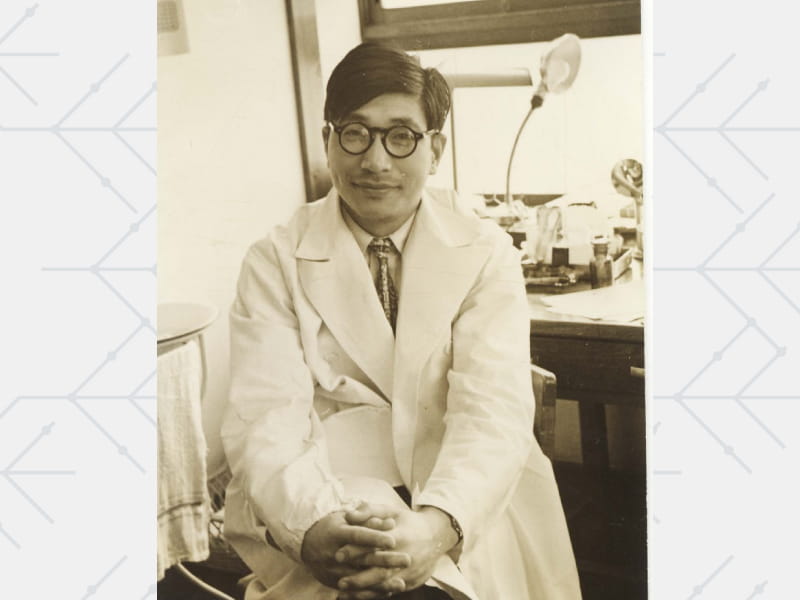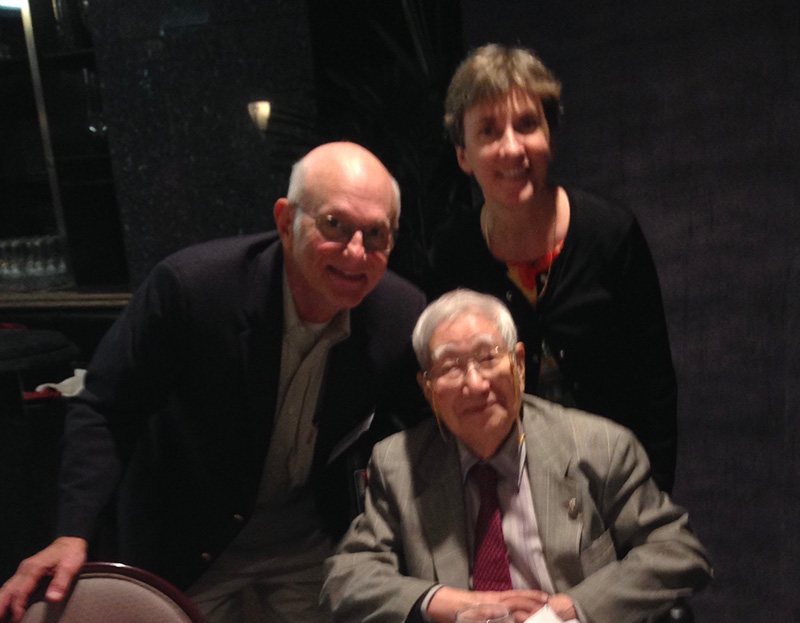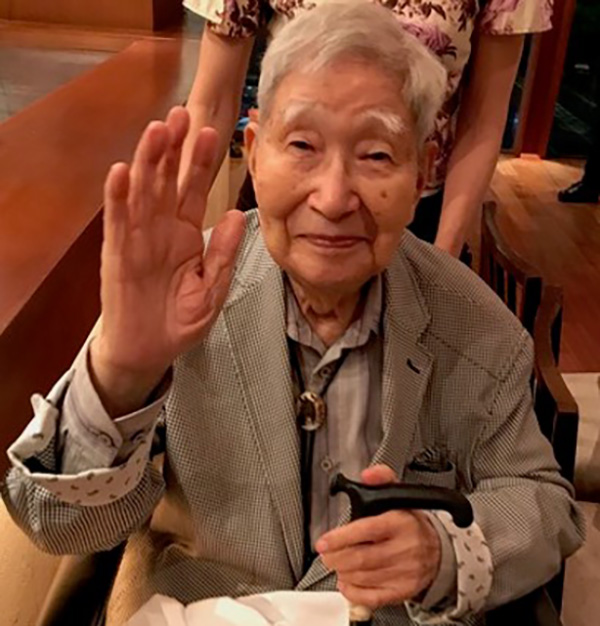Doctor who discovered Kawasaki disease dead at 95
By American Heart Association News

In the early 1960s, pediatrician Dr. Tomisaku Kawasaki saw more and more children suffering from persistent fevers, bumpy rashes and more unsightly, uncomfortable symptoms. So he began stashing their records in a special file. He labeled it with the Japanese equivalent of "GOK."
"GOK," he later told English-speaking friends, "stood for 'God Only Knows.'"
Once he had 50 cases, Kawasaki published a study announcing the discovery of an inflammatory disease. The scientific name he gave didn't stick. It instead became known as Kawasaki disease, which has been in the news recently for a possible connection to complications of COVID-19.
The publication of his findings launched Kawasaki from unknown outsider to a giant in his field. Yet he remained humble, fun-loving and – most of all – devoted to treating and understanding the disease. He died June 5 in Japan, the Kawasaki Disease Research Center announced Wednesday. He was 95.
"He lived a wonderful life, he made incredible contributions and he was quite the character – the life of every party," said Dr. Jane Newburger, director of the Kawasaki Program and professor of pediatrics at Harvard Medical School in Boston. "Even when he was well past the time of doing research himself, he very much pushed the research agenda, and he remained intellectually curious into his 90s. He was an iconic figure and a remarkable person."
Discovering a disease is a career-defining feat, the scientific version of being crowned boxing's undisputed heavyweight champion. It's an apt comparison because there's a "Rocky" quality to Kawasaki's tale.
He wasn't an academic scientist; he was a workaday pediatrician. He didn't have a lab at a prestigious institution; he saw kids at the Japan Red Cross Hospital in Tokyo. He was keenly aware of these things, which is why he waited until he had 50 cases before being so bold as to proclaim his discovery. In further deference to his outsider status, he published his groundbreaking science in a lesser-known allergy journal – even though allergies have nothing to do with Kawasaki disease.

"He was an outsider in the intense hierarchy of Japanese academic medicine and his discovery was not embraced by some members of the medical establishment," said Dr. Jane Burns, director of the Kawasaki Disease Research Center at the University of California San Diego, a translator of his landmark study and a creator of a documentary about the disease. "However, he went on to rock-star status on the global stage. His generous nature made him accessible to pediatricians throughout the world."
Added Newburger: "He had to defend his new observations against many skeptics in the academic community. That was quite courageous."
Kawasaki disease is marked by a fever that lasts at least five days and multiple other symptoms from a list that includes an extensive rash, bloodshot eyes, cracked lips, strawberry tongue, swollen lymph nodes in the neck, reddened palms and/or soles, and swollen hands and/or feet.
Most patients are 5 or younger, with the average age around 2, although some are as old as teenagers. Boys are more likely to have it than girls. While it's seen in all races and ethnicities, the genetic pattern that makes a child susceptible is most prevalent in children of Asian descent.
In the United States, there are about 5,440 Kawasaki disease hospitalizations per year, according to the Centers for Disease Control and Prevention. A new case is diagnosed on average every week at Lurie Children's Hospital in Chicago, said Dr. Stan Shulman, who leads the Center for Kawasaki Disease at Lurie Children's and Northwestern University Feinberg School of Medicine. He also is professor of pediatric infectious disease at Northwestern.

Kawasaki published his breakthrough paper in 1967 in Japanese. The English version appeared in 1974. By then, the disease was linked to heart problems, adding to the urgency for more research. Effective treatments arrived in the 1980s. The current treatment plan includes intravenous immunoglobulin plus aspirin.
"Before the modern therapies, about 25% of children with Kawasaki disease developed heart disease. Now, it's about 2% to 4%," Shulman said. "That's essentially a 90% reduction."
Kawasaki's initial paper was incredibly thorough: 53 pages with handwritten drawings detailing each patient's rash, Burns said. She called the document "probably one of the most beautiful examples of descriptive clinical writing."
He initially didn't suspect a connection to heart disease. Further research pinpointed that Kawasaki disease causes inflammation of the blood vessels, particularly in the heart. That's why the disease recently was connected to COVID-19.
Some children with COVID-19 developed multisystem inflammatory syndrome. That syndrome often was described as a "Kawasaki-like illness." Shulman said the relationship is "somewhat debatable."
"Although some of the patients have some signs of Kawasaki disease, there are quite a few striking differences as well," he said. "We're still trying to sort out what it all means."
Many important questions about Kawasaki disease remain unanswered, including important issues such as what triggers it and why the most effective treatments are so effective. There's also no specific test for it; diagnosis is based on clinical signs and symptoms with some help from non-specific laboratory tests.
The hunt to solve those mysteries sustains a worldwide network of scientists focused on the disease.
Since 1984, the American Heart Association has co-sponsored the International Kawasaki Disease Symposium; it's held every three years. In 1987, the AHA changed the name of its longstanding Rheumatic Fever and Infective Endocarditis Committee to include Kawasaki Disease; Shulman was the chairman of the committee at the time. Newburger later chaired the committee.
While scientists often take deep dives into a disease, it's rare for them to meet – much less befriend – the person who discovered that disease. Yet for the past 50 years, a perk of studying this disease was spending time with Kawasaki, a regular at the symposium and frequent lecturer around the world.
Kawasaki thrived as the center of attention. Long before cellphones and selfies, he loved taking pictures with everyone at a meeting. He personally plotted the opening and closing ceremonies of the symposiums, and the crescendo of every party was him offering the Japanese toast, "Kampai!"
"There really was a cult, almost, around Dr. Kawasaki because he was so incredibly warm and engaging," Newburger said. "His combination of intellectual rigor and wonderful social skills made him so beloved."

Those dual traits clicked at the inaugural symposium when Kawasaki realized the gulf between the English speakers and Japanese speakers. He made sure future gatherings had real-time translators.
"That's how the Kawasaki disease scholars in Japan and the United States came to know each other very well," Newburger said. "Those international relationships are part of his marvelous legacy."
Kawasaki visited Chicago three times over 20 years, the last in 2005. On one trip, Kawasaki was feted as such a celebrity that Shulman told the Chicago Sun-Times that "being around Dr. Kawasaki was like traveling with a rock star." The phrase made it into the headline, much to Kawasaki's delight.
On another visit, Kawasaki wanted to attend a Chicago Bears game. Alas, they were out of town. So the Shulmans took Kawasaki and his wife, Reiko, to a game at the University of Wisconsin, where Shulman's daughter was a student.
"They had weekly showings of NFL games on TV in Japan, so he really was a football fan," Shulman said. "But what he enjoyed most was the University of Wisconsin Marching Band performing what they call the Fifth Quarter. After the game, the band comes out and marches around the field in what looks like absolute chaos but of course is very organized. Coming from the rigid Japanese culture, the Kawasakis just ate it up. He never stopped talking about the Fifth Quarter."
Kawasaki was born in 1925 in Tokyo, the youngest of seven children, according to a 2007 profile in The Japan Times. He was fascinated by how plants and fruits grew, but he followed the path his mother wanted and became a doctor.
As an intern working soon after World War II, he found that "adult patients were full of complaints, but sick children said little," he told the newspaper. So he went into pediatrics.
He landed a job at the Red Cross Hospital in the Hiroo neighborhood of Tokyo. In 1961, he saw a 4-year-old boy with "this unusual sickness for which I could find no reference in any medical literature." A colleague dismissed it as a form of scarlet fever, but Kawasaki thought otherwise.
A year later, Kawasaki saw a similar illness in a child again and "realized that I had seen two instances which did not exist in any medical textbook." The GOK file started to grow. When he wrote about the cases, Kawasaki called the condition "mucocutaneous lymph node syndrome."
He stayed at the Hiroo hospital for 40 years until retiring. He established the Japan Kawasaki Disease Research Center and served as its director for many years; he remained its honorary chairman.
Over the years, he received many awards, including the first Japanese Pediatric Society Prize. He also received the ultimate acknowledgment of his importance within his nation's embrace: an invitation to the Imperial Palace to discuss his work with the Emperor and Empress of Japan.
A funeral already has been held. The Japan Kawasaki Disease Research Foundation said it will soon announce plans for a memorial service. Also, the next International Kawasaki Disease Symposium is scheduled to be held in Tokyo in October 2021, providing another opportunity to celebrate Kawasaki's life and legacy.
His wife died last year. No other survivor information was immediately available.
If you have questions or comments about this story, please email [email protected].





